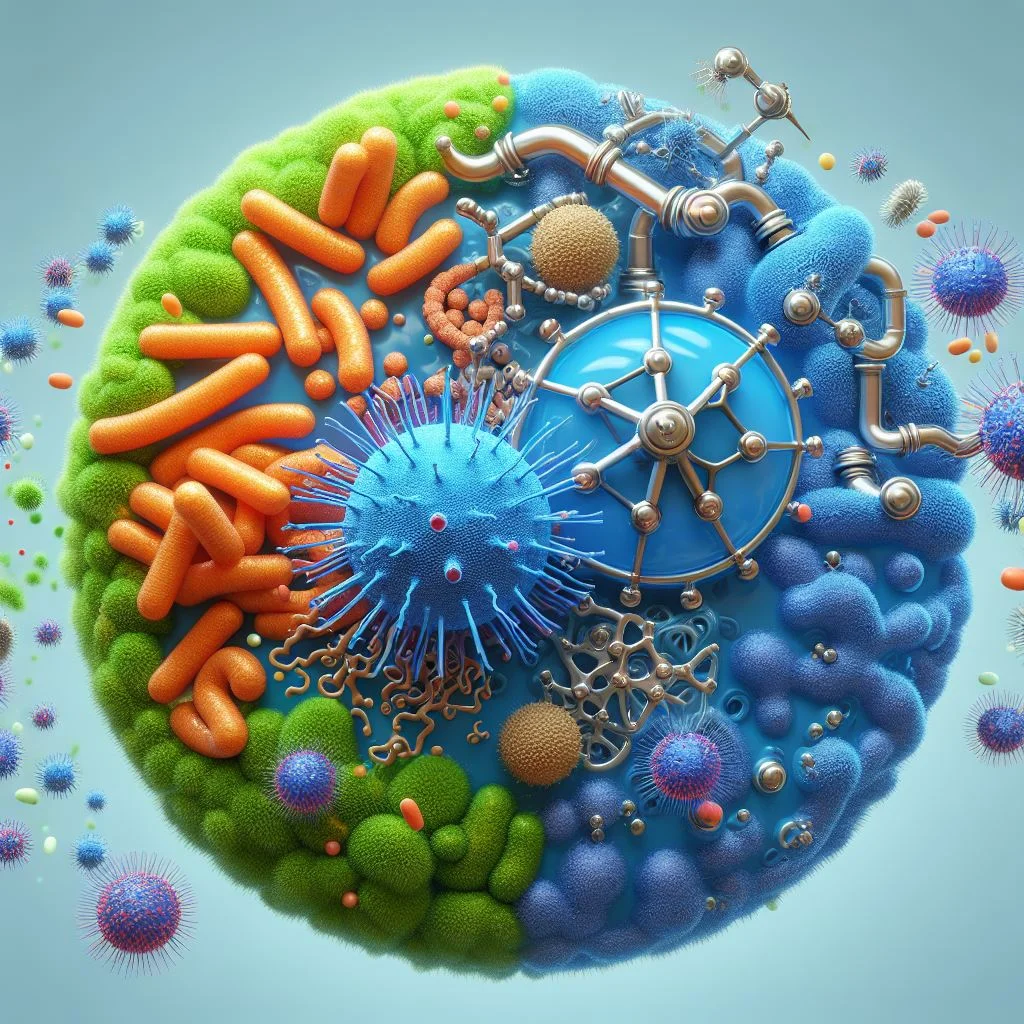Nitrogen Cycling Microbial Ecology: A Closer Look
Unveiling the Intricacies of Nitrogen Cycling: A Revolution in Microbial Ecology
In the annals of scientific inquiry, few subjects have captured the imagination of researchers quite like the nitrogen cycle. Within this intricate web of biological processes lies the enigmatic realm of ammonia oxidation, orchestrated by a diverse array of microorganisms known as ammonia-oxidizing microorganisms (AOM). Led by the visionary research of Assistant Professor Weiqin from the University of Oklahoma, a profound paradigm shift has occurred, reshaping our understanding of nitrogen dynamics and microbial ecology.
Published in the esteemed journal Nature Microbiology, Qin’s seminal work has illuminated the hitherto obscured mechanisms underlying AOM coexistence and nitrogen utilization preferences. This comprehensive discourse delves into the transformative findings of Qin’s study, exploring the implications for ecosystem health, environmental management, and the future trajectory of nitrogen research.
Unraveling the Mysteries of Ammonia Oxidation: At the Heart of the Global Nitrogen Cycle
Lies the process of ammonia oxidation, a fundamental biochemical pathway mediated by AOM. These microorganisms, encompassing both bacteria and archaea, play a pivotal role in catalyzing the conversion of ammonia (NH3) to nitrite (NO2-) and subsequently to nitrate (NO3-). This enzymatic cascade, orchestrated by the enzymes ammonia monooxygenase (AMO) and hydroxylamine oxidoreductase (HAO), represents a cornerstone of nitrogen cycling in terrestrial, aquatic, and engineered ecosystems.
For decades, scientists have grappled with a perplexing conundrum: how do diverse lineages of AOM species coexist within the same ecological niche? Traditional wisdom posited that these microorganisms competed fiercely for ammonia as their primary energy source. However, Qin’s groundbreaking research upends this long-standing paradigm, revealing a nuanced interplay between AOM lineages and their nitrogen preferences.
Differential Nitrogen Source Preferences: AOM’s Hidden Dimension
Central to Qin’s investigation is the revelation that AOM exhibit distinct preferences for nitrogen sources, with profound implications for ecosystem functioning and environmental health. Contrary to conventional assumptions, more than half of AOM species have evolved to utilize urea, a ubiquitous organic nitrogen compound, as an alternative energy source.
Unlike ammonia, which can be readily assimilated by AOM, urea presents a metabolic challenge, necessitating enzymatic breakdown into ammonia within the microbial cell. Qin’s findings underscore the remarkable physiological diversity among AOM lineages, with some exhibiting a pronounced preference for urea over ammonia. This discovery challenges entrenched dogma and underscores the dynamic nature of microbial nitrogen metabolism.
By elucidating the mechanisms governing AOM’s nitrogen utilization preferences, Qin’s research unveils a hidden dimension of microbial biodiversity, ripe for exploration and exploitation.
Coexistence Strategies: Unlocking the Secrets of AOM Lineage Coexistence
Central to Qin’s research is the elucidation of the mechanisms by which AOM lineages coexist within complex microbial communities. Through meticulous experimentation and genomic analysis, Qin and his collaborators have uncovered a myriad of regulatory strategies employed by AOM to minimize direct competition and foster coexistence.
These strategies range from differential gene expression profiles to spatial segregation within microenvironments, highlighting the adaptive prowess of these microorganisms. Of particular significance is the revelation that certain AOM lineages exhibit a competitive advantage in utilizing urea over ammonia, thereby carving out ecological niches within nitrogen-rich environments.
This differential utilization of nitrogen sources serves as a testament to the intricate interplay between microbial physiology and environmental dynamics. By embracing diversity and harnessing the metabolic versatility of AOM, ecosystems may achieve greater resilience and stability in the face of environmental perturbations.
Implications for Environmental Management: Paving the Way for Sustainability
Beyond the realm of academic inquiry, Qin’s research holds profound implications for environmental management and sustainability. The production of nitrate and nitrous oxide, byproducts of AOM-mediated ammonia oxidation, poses significant challenges to water quality and atmospheric composition.
Nitrate leaching from agricultural soils contributes to groundwater pollution, while nitrous oxide emissions exacerbate climate change as a potent greenhouse gas. By discerning which AOM lineages prefer urea over ammonia, scientists can devise targeted interventions to mitigate nitrogen pollution and greenhouse gas emissions.
Strategies may include optimizing fertilizer formulations to minimize urea utilization by AOM or implementing biological treatments to enhance nitrogen retention in soils. Furthermore, Qin’s research underscores the importance of a holistic approach to ecosystem management, recognizing the interconnectedness of microbial communities and biogeochemical processes.
Future Directions: Navigating the Complexities of Nitrogen Cycling
As the scientific community grapples with the complexities of nitrogen cycling and microbial ecology, Qin’s research points towards a future replete with opportunities and challenges. By embracing a multidisciplinary approach that integrates genomics, metabolomics, and ecological modeling, scientists can unravel the intricacies of AOM diversity and function with unprecedented clarity.
Future research endeavors may focus on elucidating the ecological drivers shaping AOM community composition, from land-use practices to climate change-induced perturbations. Furthermore, advancements in biotechnological applications of AOM may hold promise for sustainable nitrogen management in agriculture, wastewater treatment, and bioremediation.
Conclusion
In conclusion, Assistant Professor Weiqin’s pioneering research marks a watershed moment in our understanding of ammonia oxidation and microbial nitrogen metabolism. By unraveling the mysteries of AOM diversity and coexistence, Qin has propelled the field of nitrogen research into uncharted territory, opening new avenues for innovation and discovery.
As we navigate the complexities of environmental stewardship in an era of global change, Qin’s insights serve as a guiding light, illuminating pathways towards a more sustainable and resilient future for our planet.

